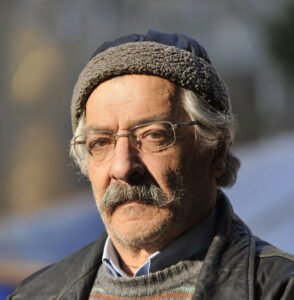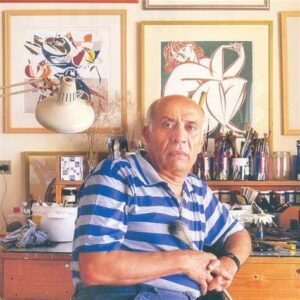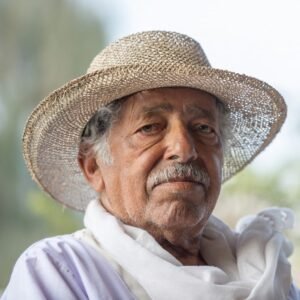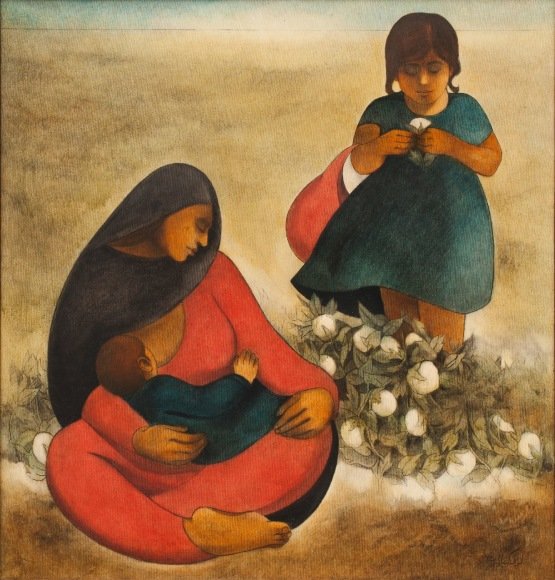
Born on 20 January 1934 in Aleppo, Syria, into a family that appreciated arts and letters. He began painting at just 11 and held his first solo exhibition at age 18 at the Al-Tajhiz School in Aleppo in 1952 . From early on, his subjects were drawn from daily life—peasants, fishermen, children—capturing a quietly heroic realism that foreshadowed a powerful career.
🎨 Training in Rome & Rise to Prominence (1955–1961)
In 1955, Kayali earned a scholarship from Syria’s Ministry of Education and enrolled at the Accademia di Belle Arti in Rome, Italy . There he mingled with influential peers, including Fateh al‑Moudarres, and exhibited at the Venice Biennale in 1960, proudly representing Syria.
In Rome he received several accolades, such as the Golden Medal for Foreigners at Ravenna (1959) and awards in Sicilian contests. His style—characterized by simple, strong lines and earthy palette—spoke of humility and quiet dignity.
🎓 Return to Syria & Academic Influence (1961–1967)
After graduating in 1961, Kayali returned to Syria and began teaching at the Higher Institute for Fine Arts, Damascus University . That same year, he held a major exhibition in Damascus featuring 28 oil paintings and 30 sketches, earning critical acclaim.
His portraits, landscapes, and still-lifes focused on everyday Syrians—bakers, fishermen, seamstresses—infused with a tender realism and expressive humanity . Works like Woman Reading (1960) conveyed intimate, luminous simplicity while hinting at social undercurrents .
⚡ Socio‑Political Art & Psychological Turmoil (1966–1972)
By the mid-1960s, Kayali began producing charcoal works addressing social injustice—titled Fi Sabil al-Qadiyyah (“For the Sake of the Cause”) in 1967. Featuring 30 politically charged drawings, the exhibition toured Syria but was harshly criticized. Disillusioned, he destroyed nearly all the works and retreated from public life.
He suffered from deep depression, and withdrew from teaching and painting, undergoing treatment in Beirut around 1969 . Meanwhile, critics praised his unique portrayal of social outsiders and working-class vulnerability .
✨ Return & Final Years (1973–1978)
In 1973, he resumed painting and held exhibitions in Damascus (1974), Beirut (1975), and Montreal (1976), often alongside Fateh al‑Moudarres. Notable works from this period—From Under the Rubble (1974)—addressed the suffering of ordinary people amid regional conflict .
Seeking renewal, he returned to Rome in 1977, but despite attempted reinvigoration, he became increasingly isolated and reliant on tranquilizers. He tragically died on 26 January 1978 in Aleppo, succumbing to severe burns after his cigarette set fire to his bed—a death some consider an artistic statement .
🎯 Artistic Style & Signature Works
- Mediums: Oil on masonite and canvas, charcoal drawings
- Style: Social realism blended with expressionist restraint—strong outlines, muted palettes, emotive focus
- Recurring themes: Workers, children, seamstresses, fishermen; dignified portrayals of social outsiders
- Representative works: Woman Reading (1960), The Match Seller (1974), From Under the Rubble (1974), Portrait of a Lady (1964)
🏛️ Legacy & Cultural Impact
Though his career was cut short, Louay Kayali’s richly human portrayals gave visibility to the unsung in Syrian society. His masterful lines and empathetic gaze continue to resonate; his work resides in public collections including:
- Mathaf: Arab Museum of Modern Art, Doha
- National Museums of Aleppo and Damascus
- Barjeel Art Foundation
- British Museum and others
In 2019, Google honored him with a doodle on what would have been his 85th birthday . His story—of artistic brilliance, struggle, and empathy—continues to inspire new generations of Arab artists.
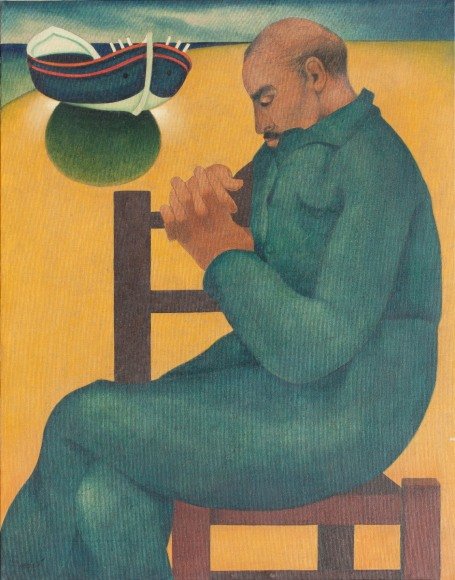

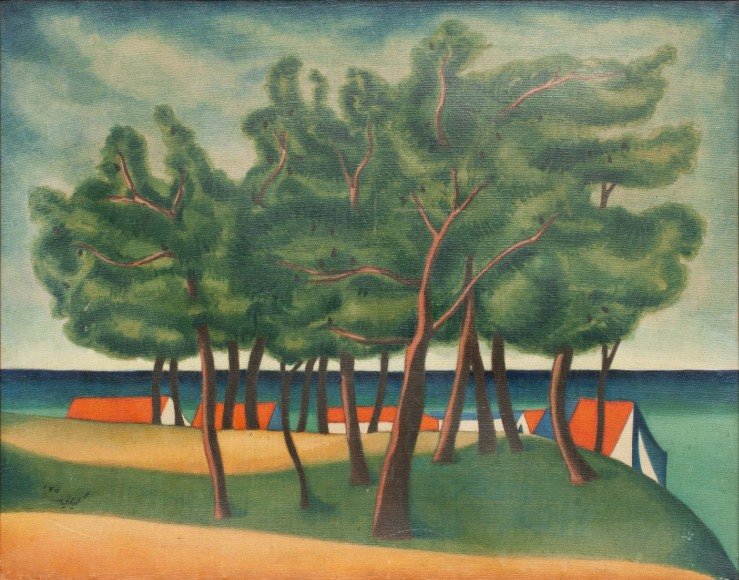
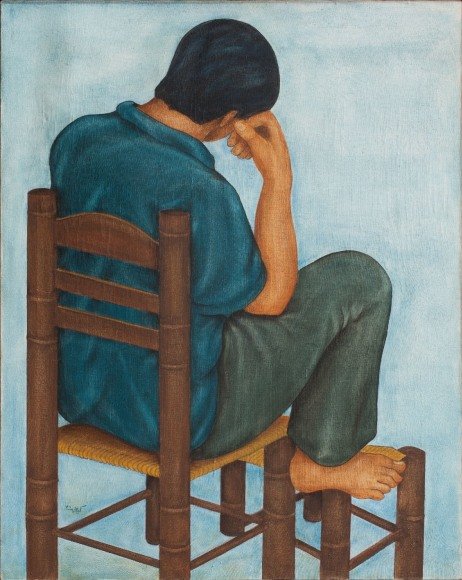
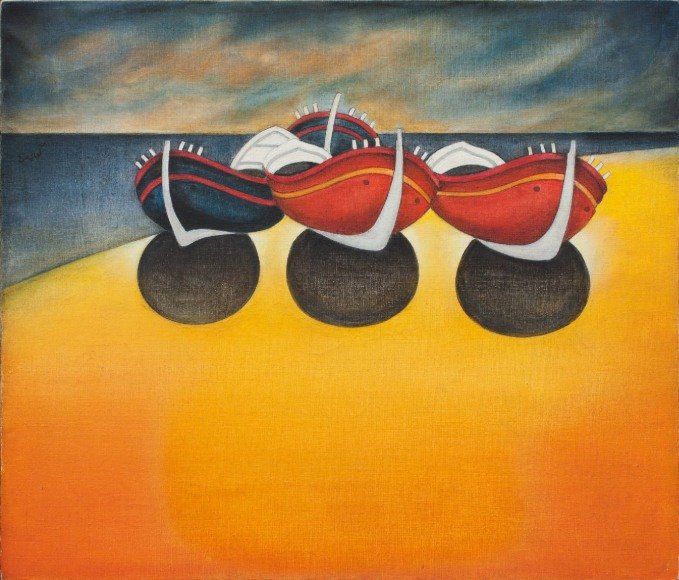
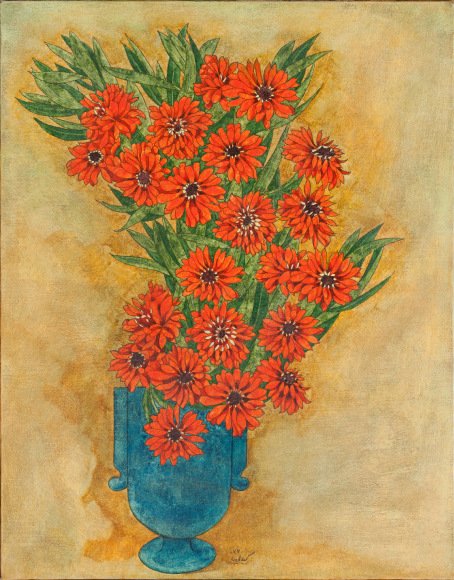
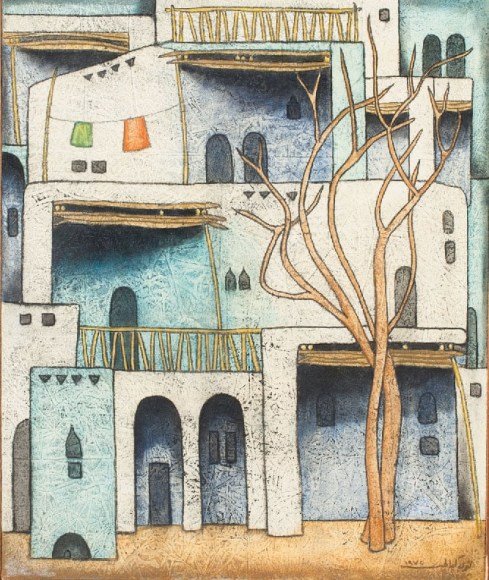
📚 Selected Sources
- Atassi Foundation – Louay Kayyali biography en.wikipedia.org+15atassifoundation.com+15fanack.com+15
- Wikipedia – Louay Kayali page fanack.com+3en.wikipedia.org+3alowais.com+3
- The National – “Who was Louay Kayali?” thenationalnews.com+1alowais.com+1
- Qatar Museums – “Louay Kayali: Painting Syria” qm.org.qa
- Christie’s & Park Gallery – analysis of works theparkgallery.com
- Meem Gallery & Barjeel Art Foundation – exhibitions and provenance alowais.com+4barjeelartfoundation.org+4thenationalnews.com+4


